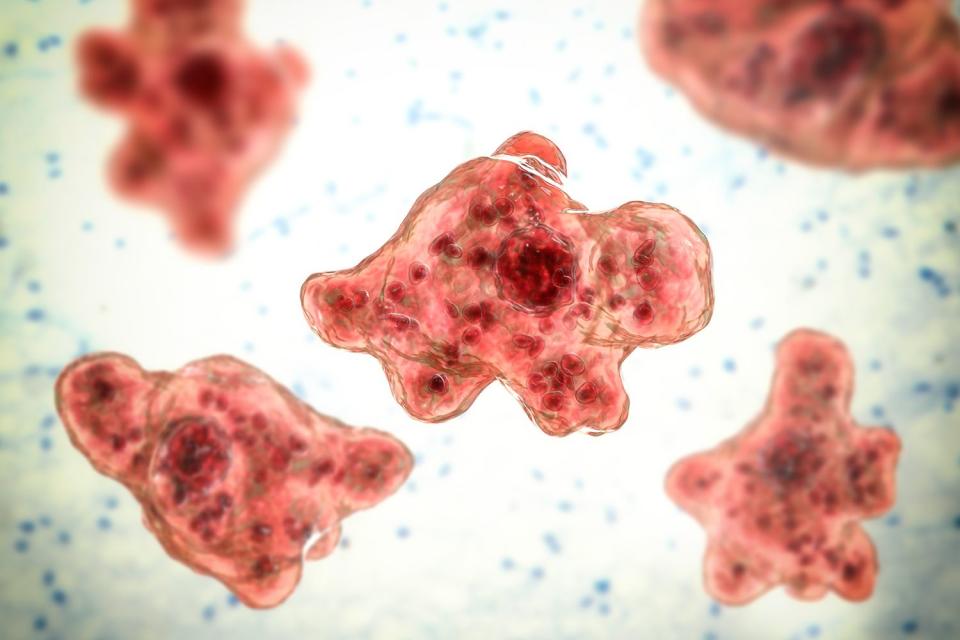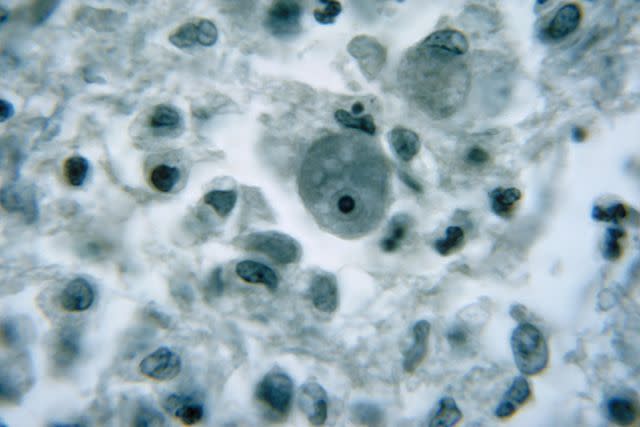Brain-Eating Amoeba Contracted at Country Club Splash Pad Leads to Death of Arkansas Resident
A splash pad in Little Rock, Arkansas, had “viable” samples of the rare Naegleria fowleri, which is usually only found in freshwater lakes and rivers

Getty
Naegleria fowleri, known as the brain-eating amoebaOne person is dead after contracting Naegleria fowleri — often called the “brain-eating amoeba” — at an Arkansas splash pad.
The rare but deadly amoeba was confirmed to be present at the splash pad at the Little Rock Country Club, according to a statement from the Arkansas Department of Health. The agency did not release the age or gender of the person who died from exposure to the amoeba.
The amoeba is generally not found in splash pads or pools, which are usually treated with chlorine, which kills it. However, the CDC does note that it can be found in "poorly chlorinated recreational and tap water."
While most cases in the U.S. are from natural sources of water, in Louisiana in 2013, the amoeba was contracted from tap water used for a Neti pot.
“The CDC has reported one splash pad sample as confirmed to have viable Naegleria fowleri,” the statement said. “The remaining samples are still pending.”
The pool and splash pad at the country club are closed, the Department of Health said, and added that “there is no ongoing risk to the public related to this exposure.”

Getty
Naegleria fowleri, known as the brain-eating amoeba.Never miss a story — sign up for PEOPLE's free daily newsletter to stay up-to-date on the best of what PEOPLE has to offer, from juicy celebrity news to compelling human interest stories.
Naegleria fowleri cannot be spread from person to person, according to the CDC. The moniker “brain-eating amoeba” comes from its ability to ”cause a brain infection when water containing the amoeba goes up the nose.”
In fact, it is only contracted through the nose, the CDC points out, and not by drinking or swallowing it.
Only about three people in the United States get infected each year, but these infections are usually fatal.
Related: 2-Year-Old Nevada Boy Dies from Brain-Eating Amoeba: 'He Fought 7 Days'
The amoeba causes primary amebic meningoencephalitis, the CDC says, and symptoms start an average of five days after exposure — with death usually following five days afterwards.
It often goes undetected “because the disease progresses rapidly so that diagnosis sometimes occurs after the patient dies,” the CDC says.
Symptoms mimic bacterial meningitis, with severe frontal headache, fever, nausea and vomiting being closely followed by a stiff neck, seizures, and coma.
Treatment includes a combination of drugs, but the CDC points out that there are only five known survivors of Naegleria fowleri in North America. One of the survivors, an 8-year-old boy, was left with permanent brain damage, while two patients whose treatment included therapeutic hypothermia (cooling the body below normal body temperature) made full neurologic recoveries.
Related: Florida Teen Flown to Chicago to Rehabilitate from Brain-Eating Amoeba: 'Long Road Ahead of Him'
The splash pad exposure is Arkansas’s first case of Naegleria fowleri since 2013, the Department of Health reports, and the state has seen 6 cases overall.
The states with the most cases, according to the CDC, are Texas (39) and Florida (37), but earlier this summer, a 17-year-old girl in Georgia died after contracting the amoeba from a lake.
For more People news, make sure to sign up for our newsletter!
Read the original article on People.

 Yahoo Movies
Yahoo Movies 
